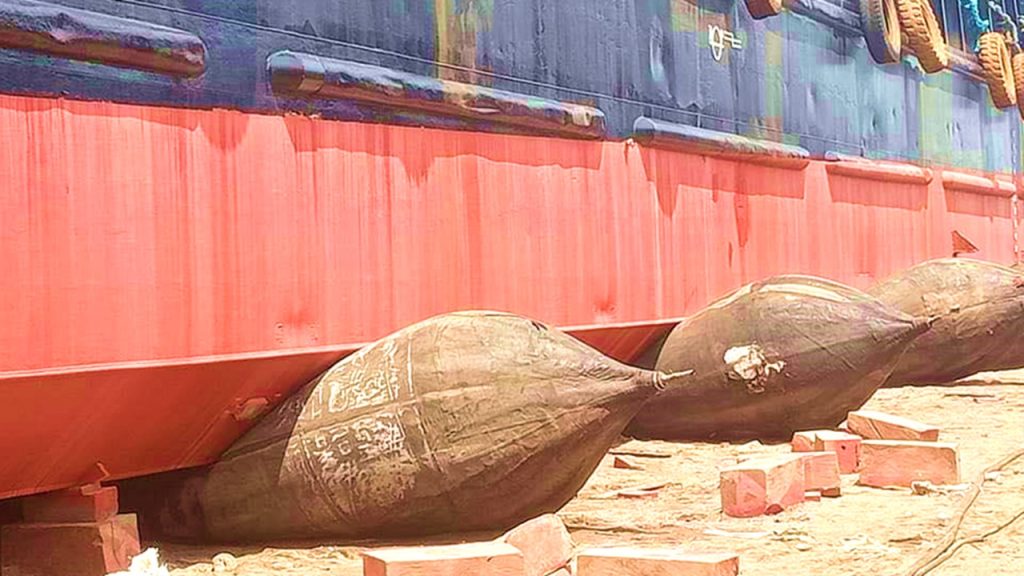Ship salvaging is a captivating and intricate practice that has been gaining momentum in the Philippines. As a nation with a rich maritime history, it comes as no surprise that the archipelago is now a hub for shipwreck exploration and recovery. From ancient vessels laden with historical artifacts to modern-day behemoths plagued by disaster, these abandoned ships hold intriguing tales of adventure and tragedy beneath their rusted exteriors. In this ultimate guide to ship salvaging in the Philippines, we will delve into the art of exploring these underwater time capsules, uncovering hidden treasures while navigating through legalities and environmental responsibilities. Whether you are an avid diver seeking thrills or simply fascinated by the secrets of the maritime past, join us on this journey as we unravel the mysteries lurking beneath Philippine waters.
Click here to view our ship salvaging capabilities.
What is Ship Salvaging?
Ship salvaging in the Philippines is a fascinating and extensive industry that involves the recovery, repair, and repurposing of ships that have been abandoned or damaged. It is an essential aspect of maritime operations, ensuring environmental protection and economic benefits. Ship salvagers employ a wide range of techniques and tools to extract valuable materials, such as steel and copper, from sunken or grounded vessels.
One interesting aspect of ship salvaging is the utilization of cutting-edge technology. Salvagers often rely on advanced sonar systems to locate wrecks hidden beneath the ocean’s surface. Drones equipped with high-resolution cameras are also used to assess the condition of salvageable vessels before any operations begin. These technological advancements not only make salvage operations more efficient but also ensure safety for divers involved in the process.
Furthermore, ship salvaging plays a crucial role in sustainable development efforts by reducing waste and pollution in coastal areas. Instead of leaving damaged ships to deteriorate in oceans or cluttering harbors, they are dismantled with care by skilled workers who comply with strict environmental regulations. This recycling process allows for the recovery of valuable resources while minimizing harm to marine ecosystems.
Ship salvaging in the Philippines goes far beyond simply recovering wrecked vessels; it embodies innovation through technology adoption and exhibits commitment towards sustainable practices. From facilitating resource recovery to protecting our oceans’ health, ship salvaging plays a key part in shaping our maritime future.
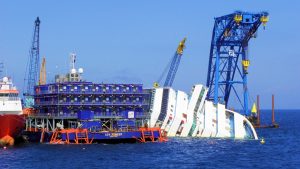
The Importance of Ship Salvaging in the Philippines
Ship salvaging plays a crucial role in the maritime industry of the Philippines, showcasing its significance and impact on various aspects. One significant importance is its contribution to the economy. Salvaging operations can generate employment opportunities for local communities, creating both direct and indirect jobs. Moreover, salvaged ships can be a valuable source of materials that can be recycled or repurposed, providing raw materials for other industries such as construction and manufacturing.
Another crucial aspect of ship salvaging in the Philippines is environmental protection. Abandoned or wrecked ships often pose significant threats to marine ecosystems due to fuel spillage and disposal of hazardous materials onboard. Salvaging these vessels helps mitigate such risks by ensuring proper containment and disposal protocols are followed, preventing further damage to marine life and habitats.
Furthermore, ship salvaging in the Philippines presents an opportunity for innovation in technology and engineering. The process requires expertise in various fields, such as naval architecture, mechanical engineering, and underwater welding. As salvage operations become more complex with larger vessels being recovered from deeper waters, it pushes professionals in these fields to develop innovative techniques and tools that allow for safer and more efficient operations.
Ship salvaging holds immense importance in the Philippines not only from an economic standpoint but also in terms of environmental protection and technological advancement. With the country’s extensive coastline dotted with numerous abandoned or wrecked vessels waiting to be salvaged, this industry serves as a vital component that contributes to sustainable development while preserving maritime resources for future generations.
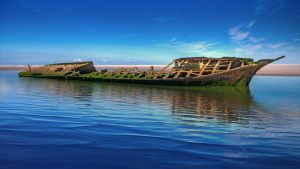
History of Ship Salvaging in the Philippines
The history of ship salvaging in the Philippines is one that spans several centuries and is woven into the fabric of the country’s maritime culture. From Spanish galleons to Japanese warships, the waters surrounding this archipelago have witnessed countless salvage operations that are steeped in intrigue and adventure.
One intriguing aspect of ship salvaging in the Philippines is its connection to treasure hunting. Many ships sunk during various historical periods were carrying valuable cargo, leading to a thriving industry focused on recovering these lost treasures. The allure of gold and silver has always captivated people’s imaginations, and it continues to drive some salvagers today.
Over time, ship salvaging has evolved from a purely commercial endeavor into an important cultural preservation effort. The sunken remnants of old ships serve as windows into our past, offering us glimpses into bygone eras and helping us learn about significant historical events. Today, shipwreck preservation organizations work alongside government agencies to protect these underwater heritage sites from looting or destruction.
The history of ship salvaging in the Philippines reveals not only tales steeped in rich maritime lore but also sheds light on how humans interact with their natural environment and strive to preserve our shared heritage for future generations. Whether it be for economic gain or historical curiosity, this timeless practice continues to shape the Philippine seascape as much as it unveils hidden treasures from beneath its depths.
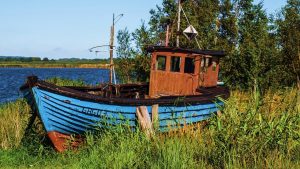
Legal and Environmental Considerations of Ship Salvaging in the Philippines
Legal and environmental considerations play a crucial role in ship salvaging operations in the Philippines. The country has strict laws governing this industry to protect its natural resources and ensure the safety of workers involved in these hazardous activities. The Philippine Maritime Industry Authority (MARINA) is actively involved in regulating salvage operations, ensuring that salvagers adhere to both local and international laws.
From an environmental standpoint, ship salvaging in the Philippines must take into account the potential impact on marine ecosystems. Salvagers must be mindful of oil spills, chemical hazards, and other forms of pollution that could harm sensitive habitats and endanger marine life. Therefore, it is imperative for salvage companies to adopt eco-friendly practices throughout the entire process, such as utilizing sustainable dismantling methods and implementing effective waste management systems.
In addition to legal and environmental considerations, social responsibility should also be a priority when engaging in ship salvaging activities in the Philippines. Companies should collaborate with local communities by providing employment opportunities, promoting skill development programs for locals, and contributing to community development initiatives. This approach fosters positive relationships with stakeholders and ensures that salvage operations are conducted in a responsible manner that benefits all parties involved.
By addressing legal obligations, environmental impacts, and social responsibilities when undertaking ship salvaging efforts in the Philippines, companies can not only avoid legal troubles but also contribute to long-term sustainable development while protecting fragile marine ecosystems. Adhering strictly to regulations set by MARINA helps preserve our environment while positively impacting local communities through economic opportunities generated by this industry.
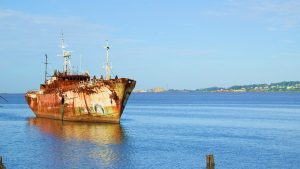
Process of Ship Salvaging in the Philippines
Did you know that the process of ship salvaging in the Philippines is not only a crucial economic activity but also an impressive display of engineering prowess? When a vessel runs aground or sinks in Philippine waters, salvage operators are called upon to retrieve valuable cargo, remove hazardous materials, and restore the marine ecosystem. This challenging endeavor requires careful planning and coordination between salvage teams, government agencies, and environmental organizations.
One key aspect of ship salvaging in the Philippines is the utilization of advanced technologies and equipment. Salvage operations often involve massive cranes capable of lifting hundreds of tons, as well as specialized diving equipment for underwater exploration. In recent years, there has been a shift towards using remotely operated vehicles (ROVs) that can navigate treacherous depths with precision. These technological advancements have significantly improved efficiency and safety during salvage operations.
The process also encompasses various legal considerations. Ship owners are held responsible for covering the costs of salvage operations under international maritime law unless proven they were free from negligence. The Philippine Coast Guard plays a vital role in overseeing salvage operations to ensure compliance with safety regulations and the protection of the environment. Additionally, cooperation between salvage operators and agencies such as the Department of Environment and Natural Resources ensures proper disposal of hazardous materials recovered from sunken vessels.
Ship salvaging in the Philippines combines expertise from different sectors – from engineering to marine biology – to mitigate environmental impact while recovering valuable assets lost at sea.
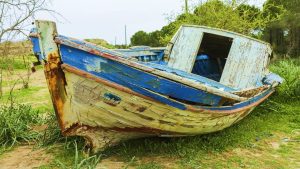
Challenges Faced by Ship Salvaging Companies in the Philippines
One of the major challenges faced by ship salvaging companies in the Philippines is the difficult and unpredictable weather conditions in the country. The Philippines is located in a region prone to typhoons, which can greatly hinder salvage operations. Strong winds, heavy rains, and rough seas make it dangerous for salvagers to carry out their work. These adverse weather conditions not only pose risks to the salvage team but also make it more challenging to extract a sunken vessel and its cargo safely.
Another significant challenge faced by ship salvaging companies in the Philippines is navigating through complex legal procedures and regulations. The country has specific laws governing salvage operations, including licensing requirements and environmental impact assessments. Navigating these regulations can be time-consuming and costly for salvaging companies. Additionally, obtaining permits from various government agencies can be a bureaucratic process that further delays salvage operations.
Ship salvaging in the Philippines presents unique challenges due to severe weather conditions and complex legal procedures. These factors require salvagers to have specialized knowledge, skills, and resources to overcome obstacles they encounter during their operations. Despite these challenges, however, ship salvaging continues to play an essential role in recovering valuable assets from sunken vessels while promoting maritime safety in Philippine waters.
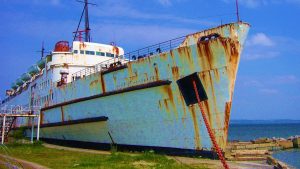
Success Stories in Ship Salvaging in the Philippines
The Philippines’ ship salvaging industry is known for its successful stories that have captured the attention of maritime enthusiasts worldwide. One notable success story is the salvage of the MV Princess of the Stars, a passenger vessel that tragically sank during a typhoon in 2008. Despite significant challenges posed by adverse weather conditions and unpredictable underwater currents, Filipino salvagers successfully retrieved more than half of the ship’s cargo and brought closure to grieving families by recovering human remains.
Another remarkable success story comes from salvaging operations in Subic Bay, where several wrecks, remnants of World War II battles, have been successfully turned into diving attractions. These wrecks not only serve as historical artifacts but also contribute to marine conservation efforts as they act as an artificial reef system teeming with vibrant marine life. The success of these endeavors has established the Philippines as a premier diving destination and showcases how shipwrecks can be transformed into valuable tourism assets.
The numerous success stories in ship salvaging across the Philippines serve as a testament to the expertise and determination of local salvage teams. Beyond simply recovering lost or damaged vessels, these successes highlight how salvaging operations can bring economic benefits through tourism and environmental preservation. As new salvage projects arise in Philippine waters, these success stories continue to inspire hope and innovation within this thriving industry.

Environmental Impact of Ship Salvaging in the Philippines
The environmental impact of ship salvaging in the Philippines is an ongoing concern that needs immediate attention. While salvaging old ships has economic benefits for the country, such as providing employment opportunities and a source of raw materials, it also comes with significant ecological consequences. One of the main issues is the release of hazardous substances from deteriorating vessels into marine ecosystems. As these ships decay over time, toxic chemicals and heavy metals can leach into the surrounding waters, posing serious threats to marine life and human health.
Furthermore, ship dismantling activities often result in oil spills that further pollute coastal areas. When fuel tanks are not properly drained or sealed off during salvage operations, there is a high risk of leakage or accidents leading to oil spills. These spills can have devastating effects on marine biodiversity and coastal communities that rely on fishing and tourism for their livelihoods. It is crucial for stricter regulations to be put in place to prevent these incidents and minimize their long-term impacts on both natural habitats and local economies.
To address these challenges, sustainable ship salvaging methods should be adopted in the Philippines. This could include implementing comprehensive safety protocols during salvage operations to ensure proper containment and disposal of hazardous materials such as asbestos, mercury-containing equipment, or other toxic substances found within decommissioned vessels. Additionally, promoting eco-friendly initiatives like recycling salvaged materials instead of resorting to burning or dumping them would significantly reduce carbon emissions associated with this industry.
Are You Looking for a Ship Salvaging Company in the Philippines?
If you’re in need of a ship salvaging company in the Philippines, look no further than Amaya Dockyard & Marine Services Inc. (ADMSI). With its commitment to quality and cost-effectiveness, ADMSI stands out as a trusted name in the industry. Their team of engineers and maritime experts has an extensive background in ship salvaging and possesses the skills and knowledge needed to handle even the most challenging salvage operations.
- Email us: info@amayadockyard.com
- Call our 24-hour hotline: +63 917 633 0479
- Viber: +63 917 633 0479
- WhatsApp: +63 917 633 0479
- Facebook Messenger: Click here
- Click here to inquire
What sets ADMSI apart is its dedication to providing innovative solutions for shipwrecked vessels. Their state-of-the-art facilities, equipped with advanced technology and machinery, enable them to carry out salvage operations while minimizing environmental impact efficiently. Additionally, they prioritize safety throughout all stages of the process, ensuring that both their workers and the environment are protected.
When choosing a ship salvaging company, it’s crucial to consider experience – an area where ADMSI excels. With decades of operation under their belt, they have successfully salvaged numerous ships across different regions of the Philippines. This track record speaks volumes about their expertise and capability to handle complex salvage projects effectively.
If you find yourself in need of a reliable and efficient ship salvaging company in the Philippines, Amaya Dockyard & Marine Services Inc.(ADMSI) is a top choice. Their commitment to quality service and cost-effectiveness, combined with cutting-edge facilities, make them one of the leading players in this field. Trust them with your salvage needs knowing that they will deliver exceptional results every time.

The Future of Ship Salvaging in the Philippines
The future of ship salvaging in the Philippines holds great potential for growth and innovation. With an archipelagic geography and a long history of maritime activities, the country is ripe with opportunities for salvage companies to thrive. However, this industry also faces challenges that need to be addressed in order to secure its future success.
One exciting development is the increasing use of advanced technology in ship salvaging operations. Drones equipped with sonar systems can quickly locate underwater wrecks, while remotely operated vehicles (ROVs) can be used to assess and retrieve valuable items from sunken vessels. This use of technology not only enhances efficiency but also reduces risks for salvage workers.
Moreover, there is growing recognition of the importance of environmental sustainability in ship salvaging practices. Salvage companies are now actively exploring ways to reduce their ecological footprint by employing eco-friendly techniques during salvage operations. Additionally, efforts are being made to collaborate with local communities and government agencies to ensure responsible disposal and management of hazardous materials found on board wrecked ships.
As we look into the future, it is clear that ship salvaging in the Philippines has immense potential for growth and development. The integration of advanced technology and sustainable practices will undoubtedly shape the industry’s trajectory moving forward. With these factors at play, we can expect more efficient salvage operations that not only benefit businesses but also contribute positively towards environmental preservation – a win-win situation for all stakeholders involved in this promising field.
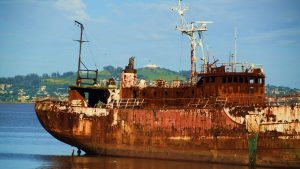
Take Away: Ship Salvaging in the Philippines – Ultimate Guide
In conclusion, ship salvaging in the Philippines is a complex process that requires immense skill and expertise. The country’s strategic location as an archipelago makes it a hotspot for shipwrecks and opportunities for salvage operations. However, there are several challenges that salvage companies face in their pursuit of recovering valuable assets from these wrecked vessels.
One key challenge is the lack of proper regulations and guidelines governing ship salvaging in the Philippines. Without clear rules, there can be disputes between salvage companies and other stakeholders, leading to legal issues and delays in operations. Additionally, environmental considerations must be taken into account to minimize damage to marine ecosystems during the salvage process.
Despite these challenges, ship salvaging in the Philippines presents immense potential for economic growth and the preservation of cultural heritage. By effectively managing salvage operations through comprehensive regulations and collaboration with various stakeholders, the country can capitalize on its vast underwater resources while ensuring sustainable practices.
Overall, ship salvaging in the Philippines is an exciting industry with significant opportunities for both economic development and historic preservation. With proper planning and coordination among all parties involved, this industry can thrive while also protecting our precious marine environment.

